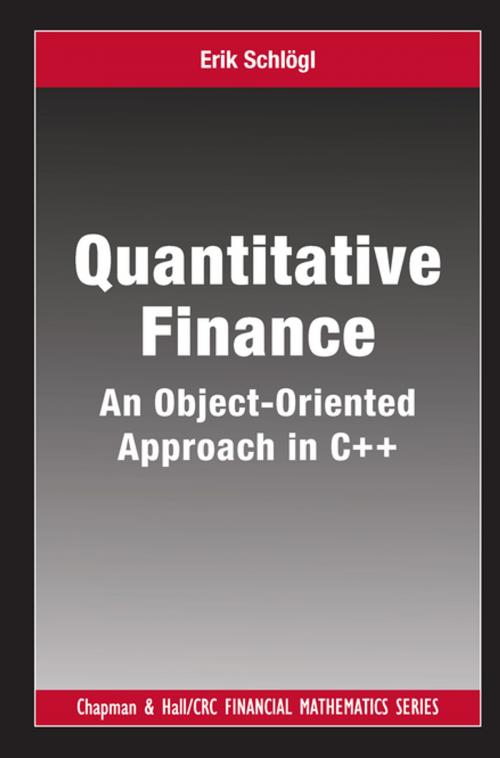Quantitative Finance
An Object-Oriented Approach in C++
Nonfiction, Science & Nature, Mathematics, Statistics, Business & Finance, Finance & Investing, Finance| Author: | Erik Schlogl | ISBN: | 9781315359854 |
| Publisher: | CRC Press | Publication: | September 3, 2018 |
| Imprint: | Chapman and Hall/CRC | Language: | English |
| Author: | Erik Schlogl |
| ISBN: | 9781315359854 |
| Publisher: | CRC Press |
| Publication: | September 3, 2018 |
| Imprint: | Chapman and Hall/CRC |
| Language: | English |
Quantitative Finance: An Object-Oriented Approach in C++ provides readers with a foundation in the key methods and models of quantitative finance. Keeping the material as self-contained as possible, the author introduces computational finance with a focus on practical implementation in C++.
Through an approach based on C++ classes and templates, the text highlights the basic principles common to various methods and models while the algorithmic implementation guides readers to a more thorough, hands-on understanding. By moving beyond a purely theoretical treatment to the actual implementation of the models using C++, readers greatly enhance their career opportunities in the field.
The book also helps readers implement models in a trading or research environment. It presents recipes and extensible code building blocks for some of the most widespread methods in risk management and option pricing.
Web Resource
The author’s website provides fully functional C++ code, including additional C++ source files and examples. Although the code is used to illustrate concepts (not as a finished software product), it nevertheless compiles, runs, and deals with full, rather than toy, problems. The website also includes a suite of practical exercises for each chapter covering a range of difficulty levels and problem complexity.
Quantitative Finance: An Object-Oriented Approach in C++ provides readers with a foundation in the key methods and models of quantitative finance. Keeping the material as self-contained as possible, the author introduces computational finance with a focus on practical implementation in C++.
Through an approach based on C++ classes and templates, the text highlights the basic principles common to various methods and models while the algorithmic implementation guides readers to a more thorough, hands-on understanding. By moving beyond a purely theoretical treatment to the actual implementation of the models using C++, readers greatly enhance their career opportunities in the field.
The book also helps readers implement models in a trading or research environment. It presents recipes and extensible code building blocks for some of the most widespread methods in risk management and option pricing.
Web Resource
The author’s website provides fully functional C++ code, including additional C++ source files and examples. Although the code is used to illustrate concepts (not as a finished software product), it nevertheless compiles, runs, and deals with full, rather than toy, problems. The website also includes a suite of practical exercises for each chapter covering a range of difficulty levels and problem complexity.















